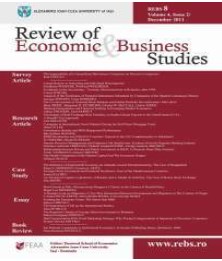SLAVERY, CLIOMETRICS AND THE AUSTRIAN SCHOOL OF ECONOMICS
SLAVERY, CLIOMETRICS AND THE AUSTRIAN SCHOOL OF ECONOMICS
Author(s): Oana CozmaSubject(s): Economic history, Social history, 19th Century, Socio-Economic Research
Published by: Editura Universităţii »Alexandru Ioan Cuza« din Iaşi
Keywords: slavery; Cliometrics; The Austrian School of Economics;
Summary/Abstract: Slavery is generally understood as the action of involving one group of people which controls and exploits another group of people in order to obtain a wide range of advantages. Even though historians, sociologists, psychologists, or philosophers appear to be most interested in the subject of slavery, economists have also long looked into the issue, particularly to determine if it was a justified workforce or a profitable institution. In addition to the linkages between slavery and the productivity of the slave labour force, economists continue to discuss whether or not the institution of slavery influenced the social and economic development of today's most developed nations. The purpose of this paper is to highlight and compare two perspectives on the economic profitability of slavery. On the one hand, the position of Alfred H. Conrad and John R. Meyer, the Cliometrics representatives, who examine the slave operations in the Antebellum South of the United States of America, 1812–1861, and who come to the conclusion that slavery was in fact profitable and self-sustaining, will be taken into consideration. On the other hand, the position of Murray Rothbard, a representative of the Austrian School of Economics, will also be presented; more specifically, his opinion will oppose Conrad and Meyer's argument that slavery was neither profitable nor sustainable. The present paper's conclusions emphasises the fact that continuous disagreement over the subject of slavery’s profitability leaves room for further research and debate.
Journal: Review of Economic and Business Studies (REBS)
- Issue Year: 2022
- Issue No: 30
- Page Range: 67-77
- Page Count: 11
- Language: English

